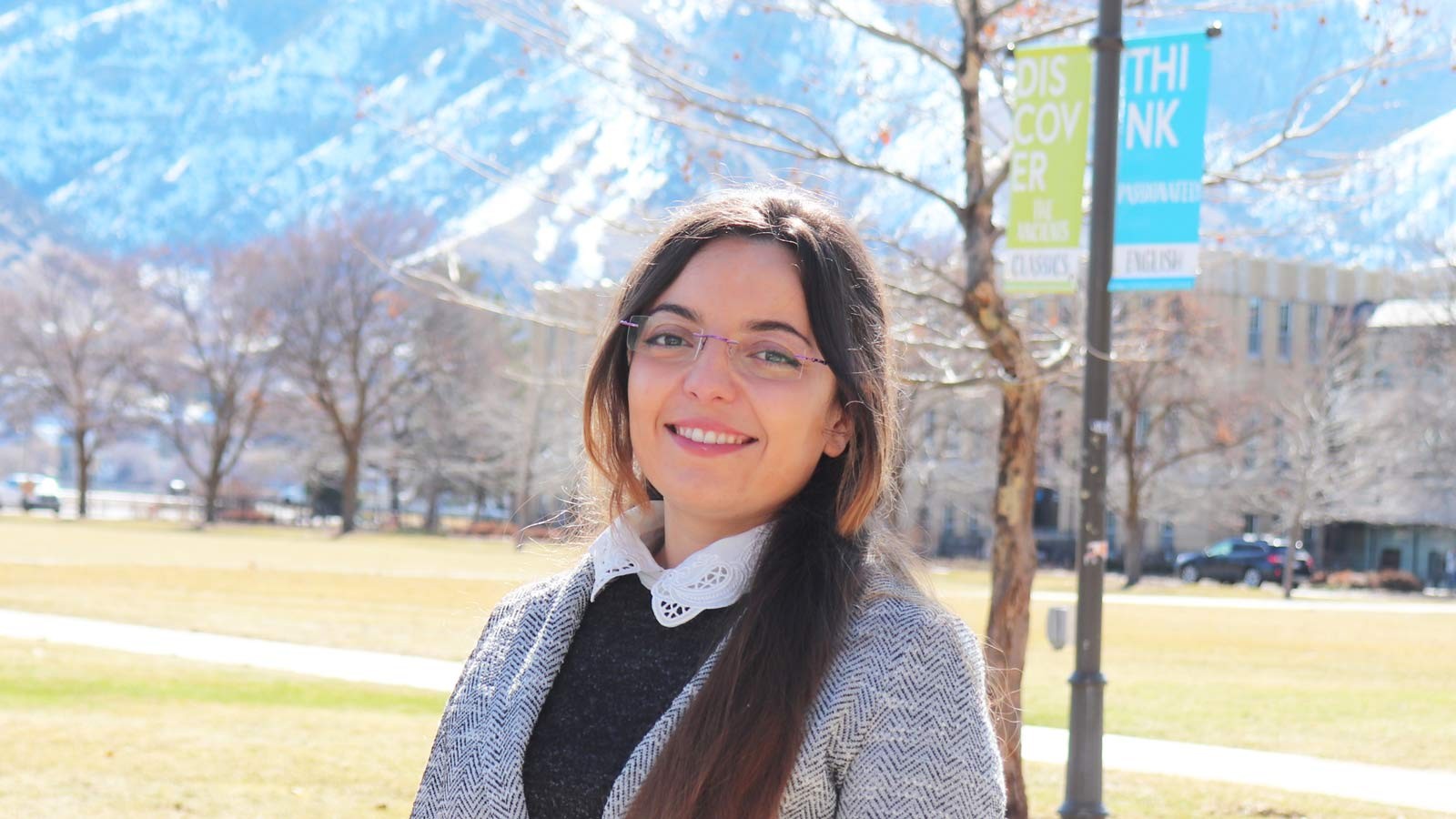Catching Rays: USU Computer Scientist Receives National Science Foundation Grant
With a three-year, over $500,000 award, Soukaina Filali Boubrahimi is developing solar energetic particle modeling to protect satellites, space explorers and global communications.
By Mary-Ann Muffoletto |
USU computer scientist Soukaina Filali Boubrahimi is the recipient of a three-year, $527,129 NSF grant to support her development of combined physics and machine learning-based models to predict solar energetic particle events. (Photo: M. Muffoletto)
Many of our daily activities — ranging from mobile phone use to surfing the net and TV viewing — depend on satellites. Solar activity can wreak havoc with these communications, causing disruptions ranging from minor inconveniences to hazardous outages on earth and dangerous radiation exposure in space.
The sun moves through activity cycles of varied intensity, each lasting about 11 years, says Utah State University computer scientist Soukaina Filali Boubrahimi.
“NASA and NOAA’s Solar Cycle 25 Prediction Panel declared the beginning of Solar Cycle 25 in December 2019, starting with a solar minimum,” says Filali Boubrahimi, assistant professor in USU’s Department of Computer Science. “The panel foresees this current cycle will ramp up toward a solar maximum in July 2025.”
This means earthlings should prepare for increased solar activity, namely solar flares and coronal mass ejections —known as CMEs. These solar emissions pelt Earth’s atmosphere, including satellites and other vehicles flying within it, with charged particles of potentially dangerous radiation.
“Solar activity can be so intense, it can hinder space flight and make re-routing of commercial air flights necessary,” she says. “Radiation streaming from the sun also places human space explorers at high risk of developing cancer and other health concerns.”
Filali Boubrahimi is the recipient of a three-year, $527,129 grant from the National Science Foundation to support her development of combined physics and machine learning-based models to predict solar energetic particle events. She will apply her expertise in designing novel methods for mining high-dimensional time series data for prediction; in this case, prediction of solar activity.
“Among the challenges of this project are modeling the frequency and speed of energetic particles emitted from the sun,” she says. “Ideally, these models will help us answer key questions about the mechanisms of transport and acceleration of solar particles from the sun to the Earth.”
Filali Boubrahimi looks forward to involving computer science and physics graduate students and undergrads directly in her lab’s efforts, and also plans outreach activities to involve students at USU’s statewide campuses, as well as the university’s Native American Summer Mentorship Program, in the research project.
“I’m planning a data mining competition, in which student participants can develop forecasting models and learn about space environment predictive capabilities,” she says. “Exploring space weather and how the sun impacts humans creates an ideal teaching opportunity.”
WRITER
Mary-Ann Muffoletto
Public Relations Specialist
College of Science
435-797-3517
maryann.muffoletto@usu.edu
CONTACT
Soukaina Filali Boubrahimi
Assistant Professor
Department of Computer Science
(435)797-1020
soukaina.boubrahimi@usu.edu
Comments and questions regarding this article may be directed to the contact person listed on this page.







